News feed
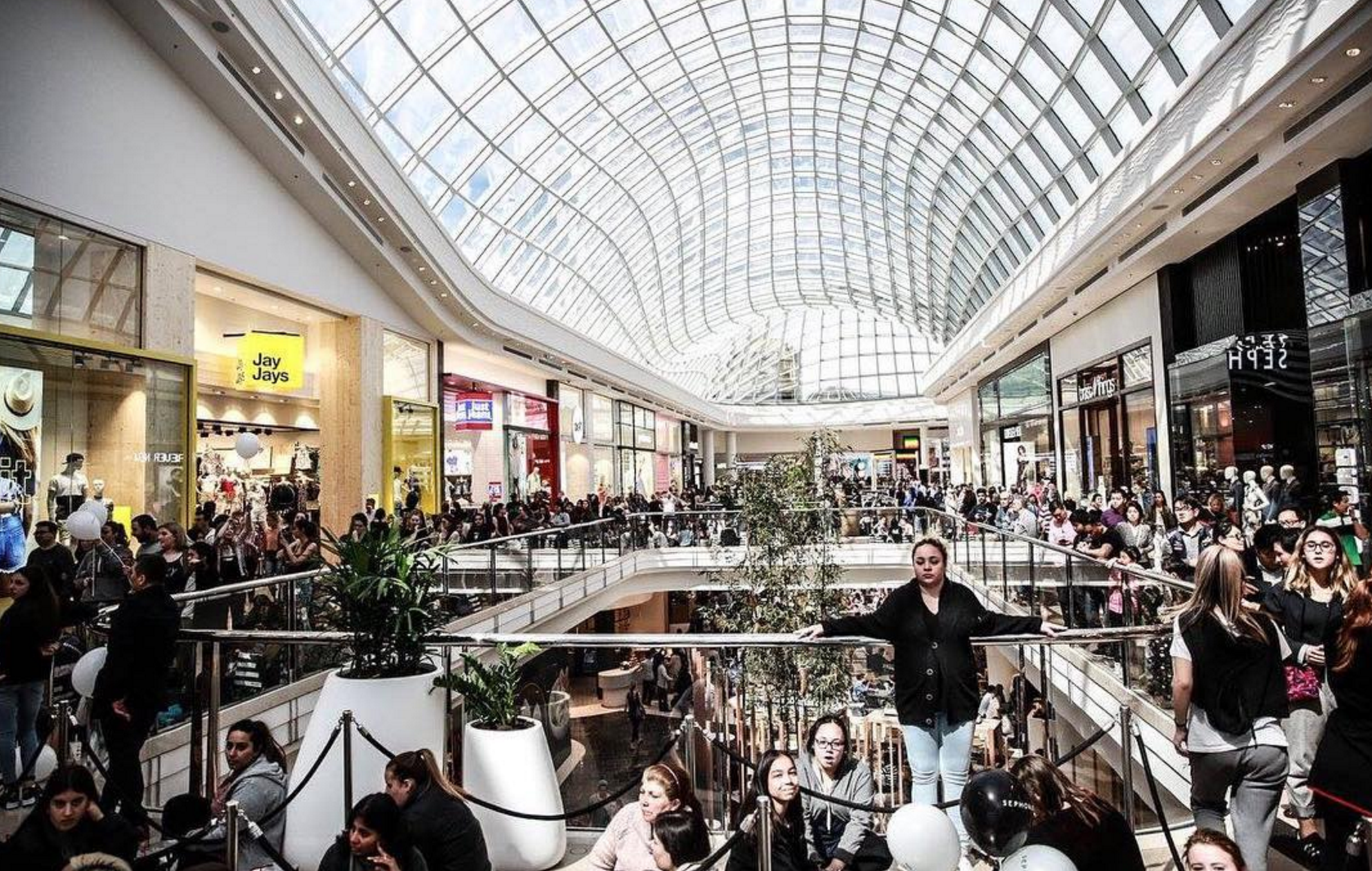
Beauty fans wait outside the new Sephora store in Chadstone
Credit: Instagram @sephoraaus
It’s 7am on a brisk Melbourne morning and there are 700 people waiting outside a store. Those at the front have spent the night in sleeping bags, and even though the doors won’t open until noon they’re smiling, giggling and chatting amongst themselves. These aren’t cagey sneakerheads outside a nondescript door waiting to nab new Yeezy Boosts, or game-faced fashion girls preparing to take no prisoner for their size at a sample sale. No, this is Sephora’s new store in Chadstone and these are beauty junkies.
It’s no fluke that Sephora have nabbed such a large chunk of the highly coveted real estate in Melbourne’s newly revamped Chadstone Shopping Centre. Unlike their fashion-obsessed counterparts, beauty addicts aren’t competitive and these 700-and-counting Sephora shoppers are contributing to the fast growth of the Australian beauty industry, now estimated to be worth $4 billion.

Credit: Instagram @sephoraaus
Founded in 1969 by Dominique Mandonnaud, Sephora was acquired by LVMH Moet Hennessy Louis Vuitton in 1997 and since then their ascent has been staggering, with more than 2000 stores in over 30 countries. Before opening their first Australian doors in Sydney’s Pitt Street Mall in December 2014, antipodean beauty addicts had limited choices: if they weren’t close to a Mecca store the would buy beloved make-up at chemists, scour multi-stores, or head to department store counters and face the cool-talking consultants. Or they would turn their holiday-making friends into make-up mules, arming them with lists for stores such as Sephora. While the beauty market has shown across-the-board growth in recent years, the French cosmetics giant has been a major player in kick-starting many of the driving forces behind the category’s success – beginning with their signature fluid layout.
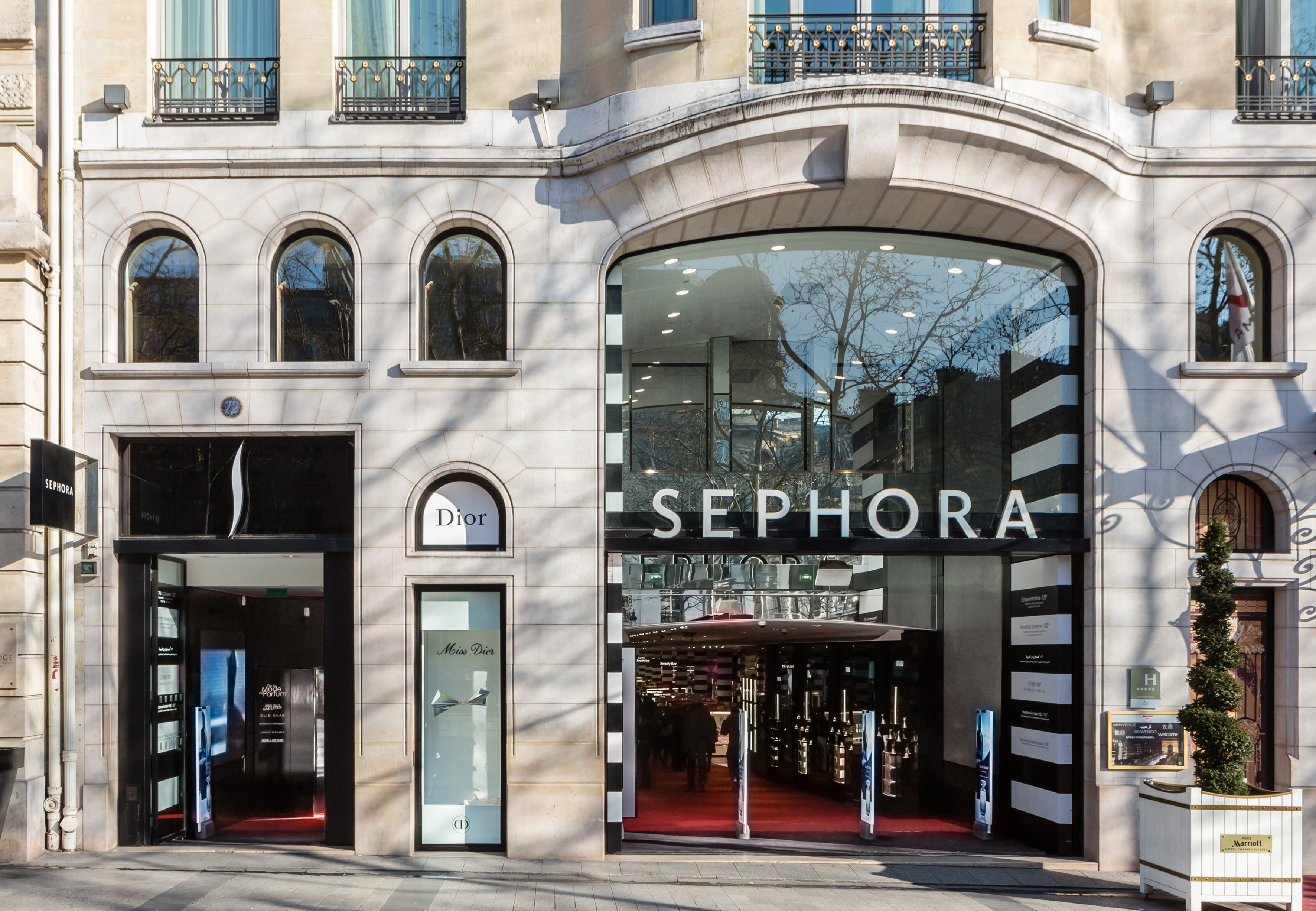
The original Sephora store on The Avenue des Champs-Élysées in Paris is still one of the busiest
Credit: Courtesy of Sephora
In each store thousands of products from countless brands are displayed on glossy black gondolas that customers can easily hop between. Testers are abundant, trying without buying is encouraged and salespeople aren’t brand-loyal or pushy. “Sephora’s open-sell concept was ahead of its time and has influenced how many of our competitors now design and operate their stores,” says Chris de Lapuente, Global Chief Executive Officer of Sephora, of their signature low pressure, high energy strategy.
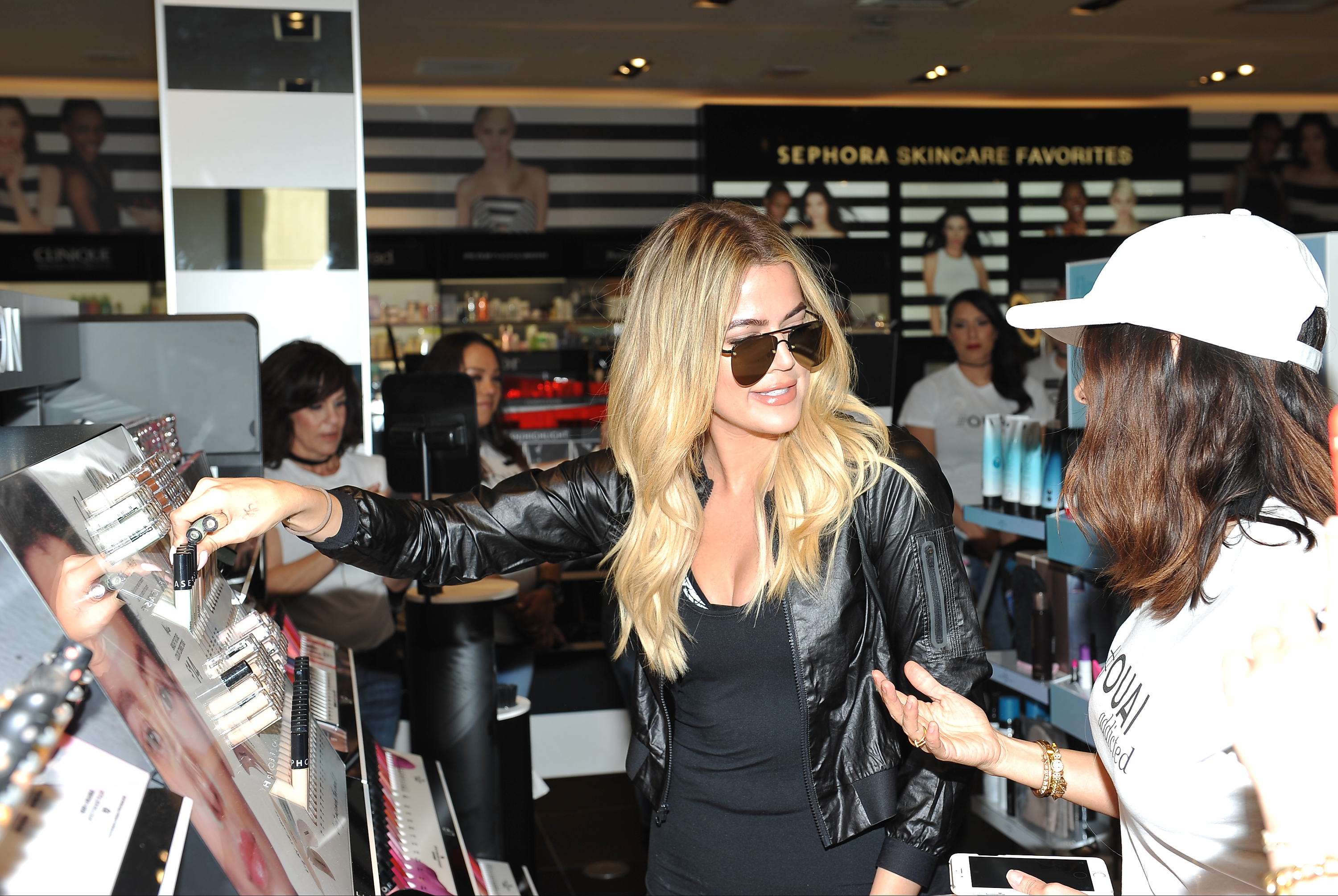
Khloe Kardashian’s hairstylist Jen Atkin’s line Ouai is stocked exclusively in Sephora
Credit: Getty Images
“It’s part of our DNA to let the customer decide, once there’s pressure to buy it’s not a fun experience and if a customer has walked out but loved the experience then I’m perfectly happy because they’ll come back and tell their friends how amazing it was.”
Beyond housing the big beauty brands and scouting the set-for-cult-status up-and-comers, the company’s focus on building their own in-house Sephora Collection was ahead of its time and a huge revenue driver, sparking a similar approach amongst their competitors. “The brand offering that Sephora is famous for has not only expanded dramatically over time, but has seen the need for more of an exclusive brand offering as a point of difference,” says de Lapuente. Rather than considering the Sephora Collection as a competitor to outside brands, de Lapuente describes it as an entry point into prestige and a fill-the-gap compliment to other blockbuster beauty buys. “When a customer comes in to buy her Dior Vernis varnish she might buy a Sephora nail varnish remover or a brush to go with her Benefit Brow Zings.”
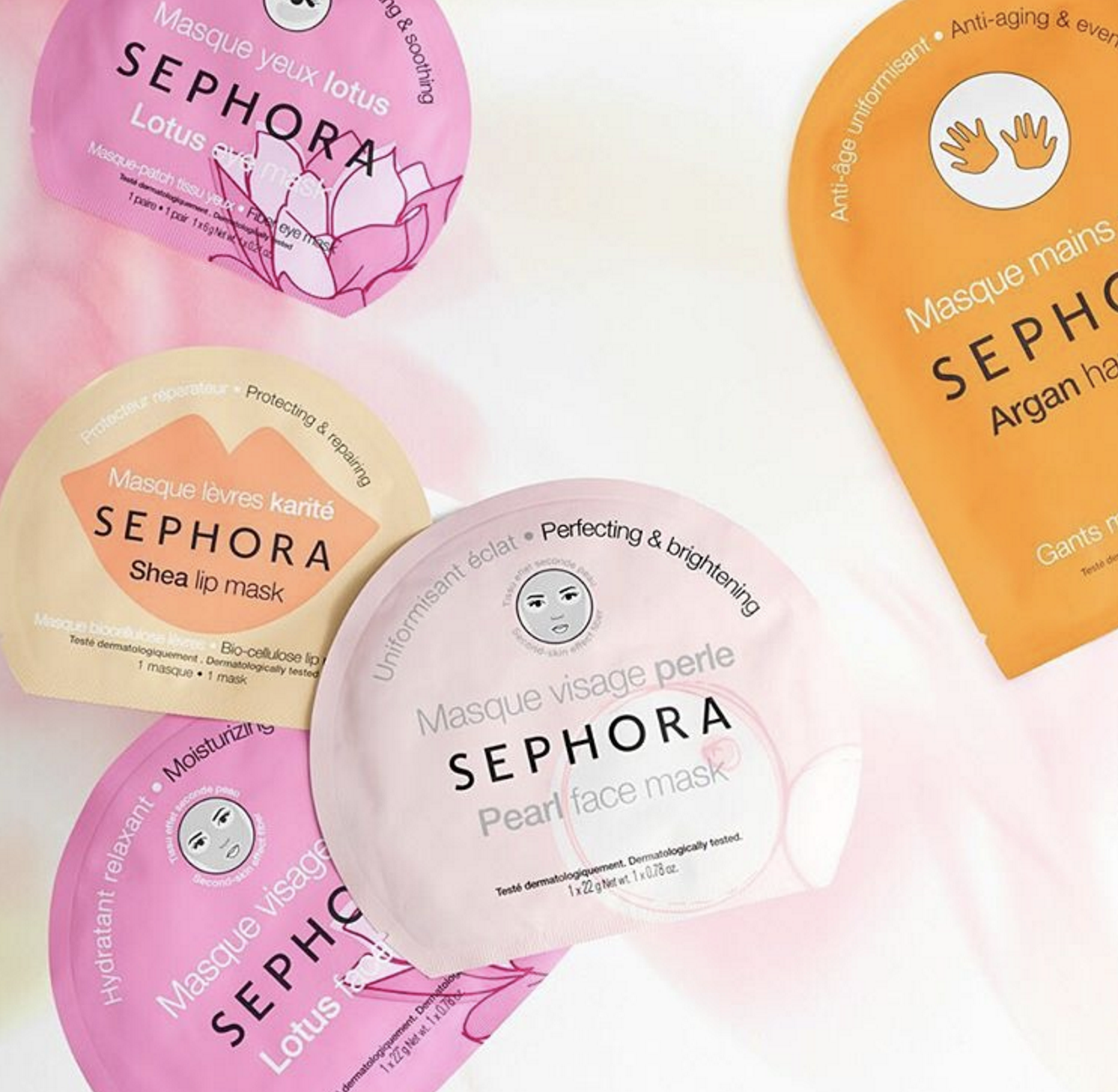 Tapping into the mask movement, Sephora Collections range of sheet masks started out in China before finding success in stores worldwide.
Tapping into the mask movement, Sephora Collections range of sheet masks started out in China before finding success in stores worldwide.
Credit: Instagram @sephora
Sephora’s multi-continent presence also gives the in-house development teams invaluable access to trends and what’s hot in every country, which they can then develop complementing products in their own line.
While fashion is dictated by the season, beauty trends aren’t confined to the weather, meaning a hit contouring kit’s success can be felt simultaneously in Seattle, Seoul and Sydney.
“For many, many years, beauty brands from around the world have been looking to countries throughout Asia, such as Korea for innovative ingredients and trends. More recently, and I’m sure with thanks to the digital age, the consumer awareness and engagement of beauty trends from these countries has grown tremendously – which is fantastic as it has elevated many brands unique to these countries to a worldwide audience.” Tapping into the Korean and Japanese-led mask movement, the Sephora Collection range of on-trend sheet and sleeping masks start at $3 a pop. “The world is much more homogenous than your think.”
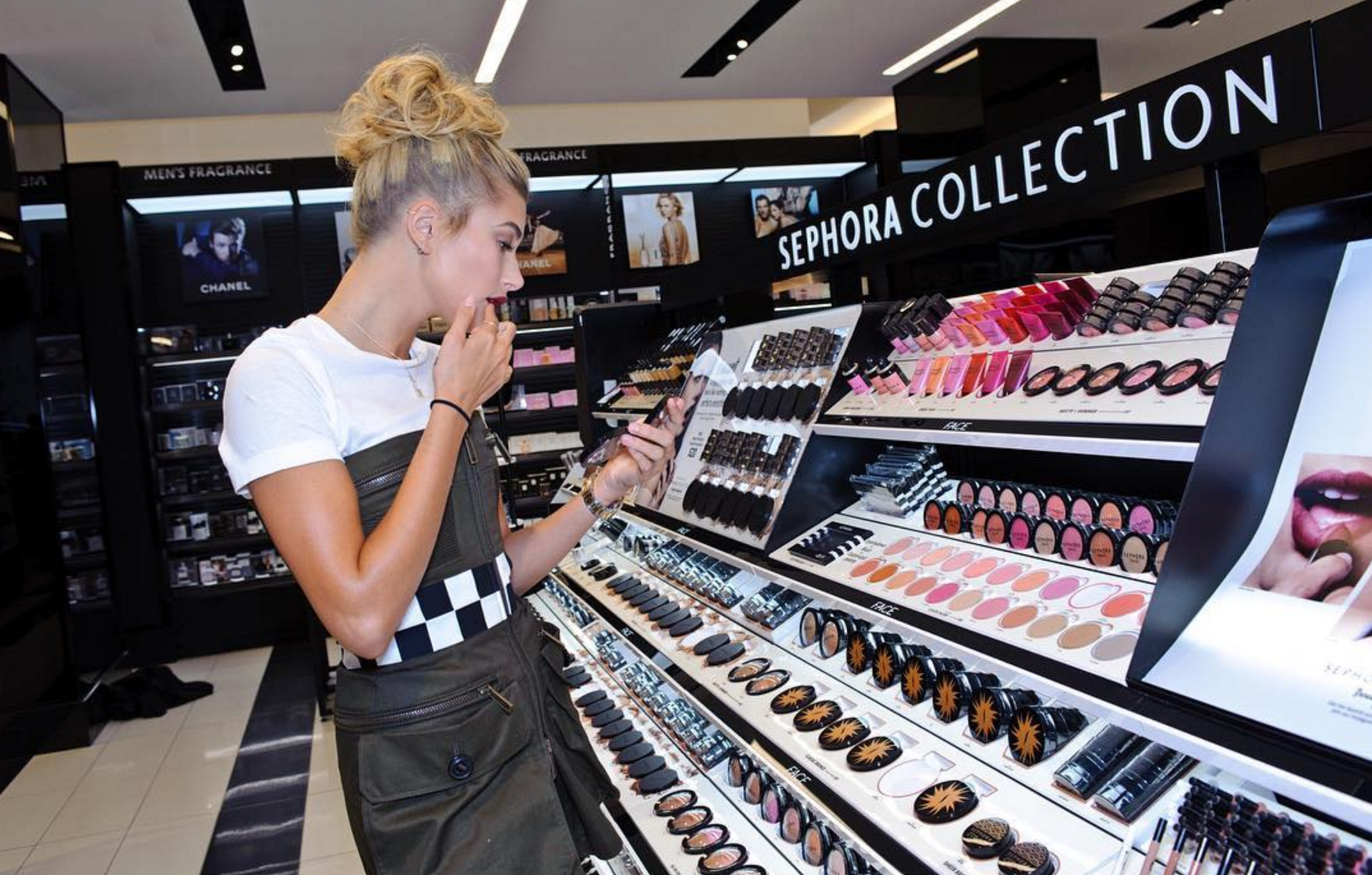
Hailey Baldwin inspects the Sephora Collection
Credit: Instagram @sephora
The rise of blogger and YouTube tutorials is in part responsible for this homogeny, resulting savvier beauty shoppers than ever before. (Oh, and having celebrities like Kylie Jenner casually SnapChatting their Sephora spending sprees certainly helps too.) “We are in the process of launching incredible digital initiatives set to launch in the next 12 months within Australia,” says de Lapuente. “We are currently working on tailor-made apps to create greater personalisation and freedom for our customer’s to experience and place both online and in-store.”
For now however, Sephora’s novelty shows no sign of waining, the recent turn-up at Chadstone proves that bricks and mortar stores still have a place in the hearts (and wallets) of beauty junkies, but that doesn’t mean they can afford to get complacent. “As we are a newly established business in the Australian market, we will need to continually adapt to the ever-changing consumer,” says de Lapuente. “The beauty industry is constantly evolving, and our biggest challenges are keeping up with the diversity of the industry, and the ever-changing beauty trends.”










